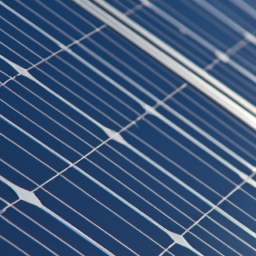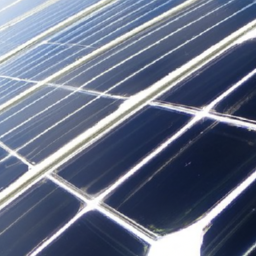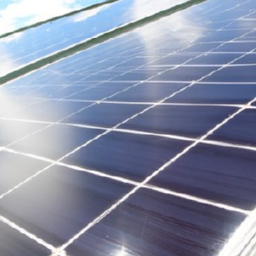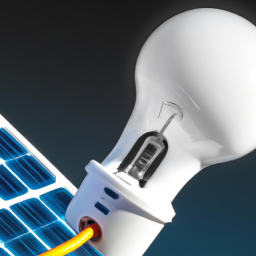In this article, we will explore whether it is possible to connect a solar generator to an already existing solar panel system at home. We will discuss the benefits and challenges of this connection, as well as any necessary equipment or modifications required. By the end of the article, you will have a better understanding of whether connecting your solar generator to your home’s existing solar panel system is a feasible option for you.
Can I Connect My Solar Generator To My Home’s Existing Solar Panel System?
If you have a solar panel system installed in your home, you may be wondering if it is possible to connect a solar generator to it. a solar generator, also known as a portable solar power station, can be a convenient backup power source during emergencies or when you are off the grid. In this article, we will explore the compatibility of a solar generator with an existing solar panel system and guide you through the process of connecting the two.
Understanding a Solar Generator
Before delving into the compatibility and connection process, let’s first understand what a solar generator is. A solar generator is a self-contained system that consists of solar panels, a battery, an inverter, and a charge controller. The solar panels capture sunlight and convert it into electricity, which is then stored in the battery. The built-in inverter converts the stored DC electricity into AC electricity, allowing you to power your appliances and devices. A charge controller regulates the charging of the battery and prevents overcharging.
The working principle of a solar generator is simple. When sunlight hits the solar panels, they generate an electric current. This current is then stored in the battery, which can be used to power your electrical devices later. The advantage of a solar generator is that it is a portable and self-contained unit, making it easy to use in various situations, such as camping trips, power outages, or remote locations where electricity is not readily available.
Components of a Solar Generator
To understand the compatibility of a solar generator with an existing solar panel system, let’s take a closer look at the components of a solar generator:
Solar Panels
Solar panels are the heart of any solar power system, including a solar generator. They are responsible for converting sunlight into electricity. The size and capacity of the solar panels will determine the amount of electricity generated.
Battery
The battery in a solar generator stores the generated electricity for later use. It ensures that power is available even when the sun is not shining. The capacity of the battery will determine how long you can continuously power your devices.
Inverter
An inverter is an essential component of a solar generator as it converts the DC electricity stored in the battery into AC electricity. This allows you to power your household appliances and devices. The size of the inverter will determine the maximum load that can be powered at any given time.
Charge Controller
The charge controller regulates the charging of the battery and prevents overcharging. It ensures that the battery is charged properly and efficiently. The charge controller also helps protect the battery from damage.
Compatibility of Solar Generator with Existing System
To determine the compatibility of a solar generator with an existing solar panel system, there are a few factors that need to be considered. These include the capacity and output of the existing system, the capacity of the solar generator, the electrical load of your home, and the required output.
Evaluating the Capacity and Output of the Existing Solar Panel System
Start by assessing your existing solar panel system. Look at the size and capacity of the solar panels, as well as the inverter. Determine the maximum output of the system and whether it can handle additional power from a solar generator.
Determining the Capacity of the Solar Generator
Next, evaluate the capacity of the solar generator you intend to connect to your existing system. Consider the size and wattage of the solar panels, the capacity of the battery, and the size of the inverter.
Evaluating the Electrical Load of the Home
Assess the electrical load of your home by adding up the wattage of all the appliances and devices you plan to power with the solar generator. This will give you an idea of the amount of power you need the system to provide.
Calculating the Required Output and Compatibility
Once you have determined the capacity and output of your existing system, as well as the required output for your home, you can compare the two to determine if they are compatible. Ideally, the output of the solar generator should not exceed the capacity of the existing system, and it should be able to meet the required power demand of your home.
Steps to Connect a Solar Generator to an Existing Solar Panel System
If your existing solar panel system and the solar generator are compatible, you can proceed with the connection process. Here are the steps involved:
Assessing the Existing System
Inspect the solar panels, inverter, and wiring of your existing system. Check for any damage or issues that may need to be addressed before connecting the solar generator.
Choosing the Right Connection Method
There are three main connection methods: parallel, series, and parallel-series. Depending on the capacity and output of your existing system and the solar generator, choose the method that works best for your setup.
Wiring and Connection Steps
Identify the connection points on your existing system and the solar generator. Ensure that the wiring is done correctly, following the manufacturer’s instructions. Make sure to use proper connectors and secure the connections properly.
Ensuring Safety Measures
Install proper grounding to protect against electrical shocks. Implement overload protection to prevent damage to the system. Familiarize yourself with safety codes and regulations to ensure compliance.
Conclusion
In conclusion, it is possible to connect a solar generator to your home’s existing solar panel system if the two are compatible. By evaluating the capacity and output of your existing system, determining the capacity of the solar generator, and assessing the electrical load of your home, you can calculate the compatibility and make the necessary connections. Connecting a solar generator to your existing system can provide you with a convenient backup power source and enhance the overall efficiency of your solar power setup.




